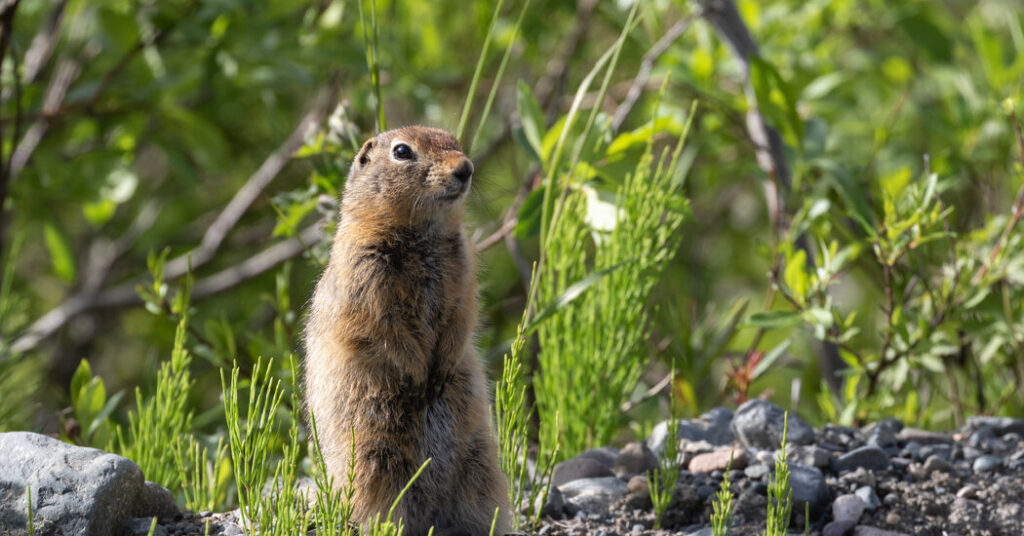Male Arctic ground squirrels go through puberty every year. As if that wasn’t hard enough, now the females have a problem, too.
According to a paper published on Thursday in the journal Science, climate change appears to be making them emerge from hibernation earlier. That matters, because it could throw off the timing of the animals’ mating cycle.
Typically, males come out of hibernation before females to prepare for the spring mating season. They need time to reach sexual maturity again, every year, because their testosterone levels drop sharply during the winter.
Then, the females wake up. But scientists have found that as temperatures rise, female ground squirrels are emerging up to 10 days earlier than they used to. Researchers think it has to do with earlier thawing of the soil.
The hibernation pattern of the males, meanwhile, does not appear to be changing.
“This study suggests that males and females of the same species can respond differently to climate change,” said Helen E. Chmura, a research ecologist with the United States Forest Service who was lead author on the paper. “This could have important implications for reproduction.”
The squirrels’ troubles are part of a much larger crisis. Around the world, wildlife is struggling. On land, the main cause is humans taking over too much of the planet, erasing the biodiversity that was there before. In the oceans, the main problem is overfishing. Climate change is making survival even more difficult.
For now, Arctic ground squirrels are still plentiful in the wild. The International Union for Conservation of Nature classifies them as a species of least concern, meaning that they are not threatened or in need of conservation efforts. But the paper says the new hibernation mismatch “has the potential to affect their survival probability.”
Any decline in squirrel populations could disrupt the local food web. Almost all Arctic predators, from wolves to eagles, rely on them as a food source.
Although the Arctic is warming faster than any other region on Earth, there is relatively little research on how this heating is affecting animals. This new paper, which covers more than 25 years in Northern Alaska, is one of the first long-term research projects to present strong evidence that warming is directly changing the physiological processes of Arctic species.
“This study is relatively unusual because it shows that warming is directly impacting a mammal,” said Cory T. Williams, an assistant professor at Colorado State University and a co-author of the study. “Some people might say, ‘OK, a 10-day advance over 25 years doesn’t seem that fast.’ But in terms of climate, that’s incredibly fast.”
Arctic ground squirrels might look cute, but males can be very territorial. They get into a lot of fights during mating season, some deadly. They have tails, but not long, bushy ones like squirrels found farther south. And they make distinctive whistling noises that could easily be mistaken for the chirp of a small bird. Some Alaska Natives call them parka squirrels because their fur makes a nice, warm fringe for the hood of a coat.
Scientists have long been interested in their hibernation patterns.
During the long winter sleep, the squirrels’ core body temperature can drop to about 27 degrees Fahrenheit, or roughly minus 3 Celsius, with their resting heart rate falling as low as three beats per minute. More knowledge about that process could lead to advances in therapeutic hypothermia, a medical treatment in which the body temperature is lowered to prevent injury. It’s sometimes used after cardiac arrest.
But the most pressing challenge, scientists say, is getting a grip on the changes happening in the Far North.
“The big gap is just understanding what is happening in the Arctic in general,” Dr. Williams said. “This study shows why we need long-term projects to understand the changes happening across different levels.”


